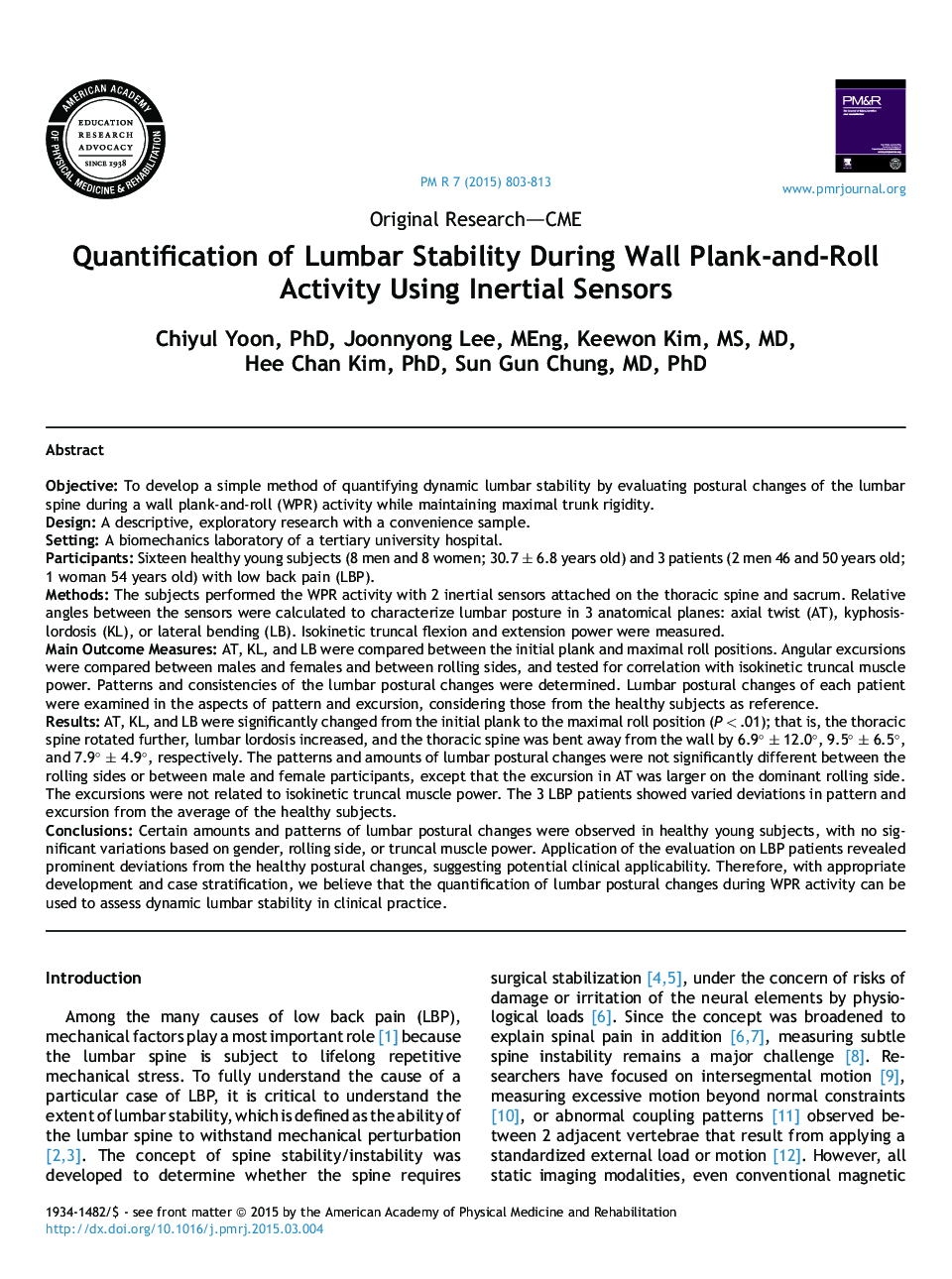| کد مقاله | کد نشریه | سال انتشار | مقاله انگلیسی | نسخه تمام متن |
|---|---|---|---|---|
| 2706952 | 1144832 | 2015 | 11 صفحه PDF | دانلود رایگان |
ObjectiveTo develop a simple method of quantifying dynamic lumbar stability by evaluating postural changes of the lumbar spine during a wall plank-and-roll (WPR) activity while maintaining maximal trunk rigidity.DesignA descriptive, exploratory research with a convenience sample.SettingA biomechanics laboratory of a tertiary university hospital.ParticipantsSixteen healthy young subjects (8 men and 8 women; 30.7 ± 6.8 years old) and 3 patients (2 men 46 and 50 years old; 1 woman 54 years old) with low back pain (LBP).MethodsThe subjects performed the WPR activity with 2 inertial sensors attached on the thoracic spine and sacrum. Relative angles between the sensors were calculated to characterize lumbar posture in 3 anatomical planes: axial twist (AT), kyphosis-lordosis (KL), or lateral bending (LB). Isokinetic truncal flexion and extension power were measured.Main Outcome MeasuresAT, KL, and LB were compared between the initial plank and maximal roll positions. Angular excursions were compared between males and females and between rolling sides, and tested for correlation with isokinetic truncal muscle power. Patterns and consistencies of the lumbar postural changes were determined. Lumbar postural changes of each patient were examined in the aspects of pattern and excursion, considering those from the healthy subjects as reference.ResultsAT, KL, and LB were significantly changed from the initial plank to the maximal roll position (P < .01); that is, the thoracic spine rotated further, lumbar lordosis increased, and the thoracic spine was bent away from the wall by 6.9° ± 12.0°, 9.5° ± 6.5°, and 7.9° ± 4.9°, respectively. The patterns and amounts of lumbar postural changes were not significantly different between the rolling sides or between male and female participants, except that the excursion in AT was larger on the dominant rolling side. The excursions were not related to isokinetic truncal muscle power. The 3 LBP patients showed varied deviations in pattern and excursion from the average of the healthy subjects.ConclusionsCertain amounts and patterns of lumbar postural changes were observed in healthy young subjects, with no significant variations based on gender, rolling side, or truncal muscle power. Application of the evaluation on LBP patients revealed prominent deviations from the healthy postural changes, suggesting potential clinical applicability. Therefore, with appropriate development and case stratification, we believe that the quantification of lumbar postural changes during WPR activity can be used to assess dynamic lumbar stability in clinical practice.
Journal: PM&R - Volume 7, Issue 8, August 2015, Pages 803–813
